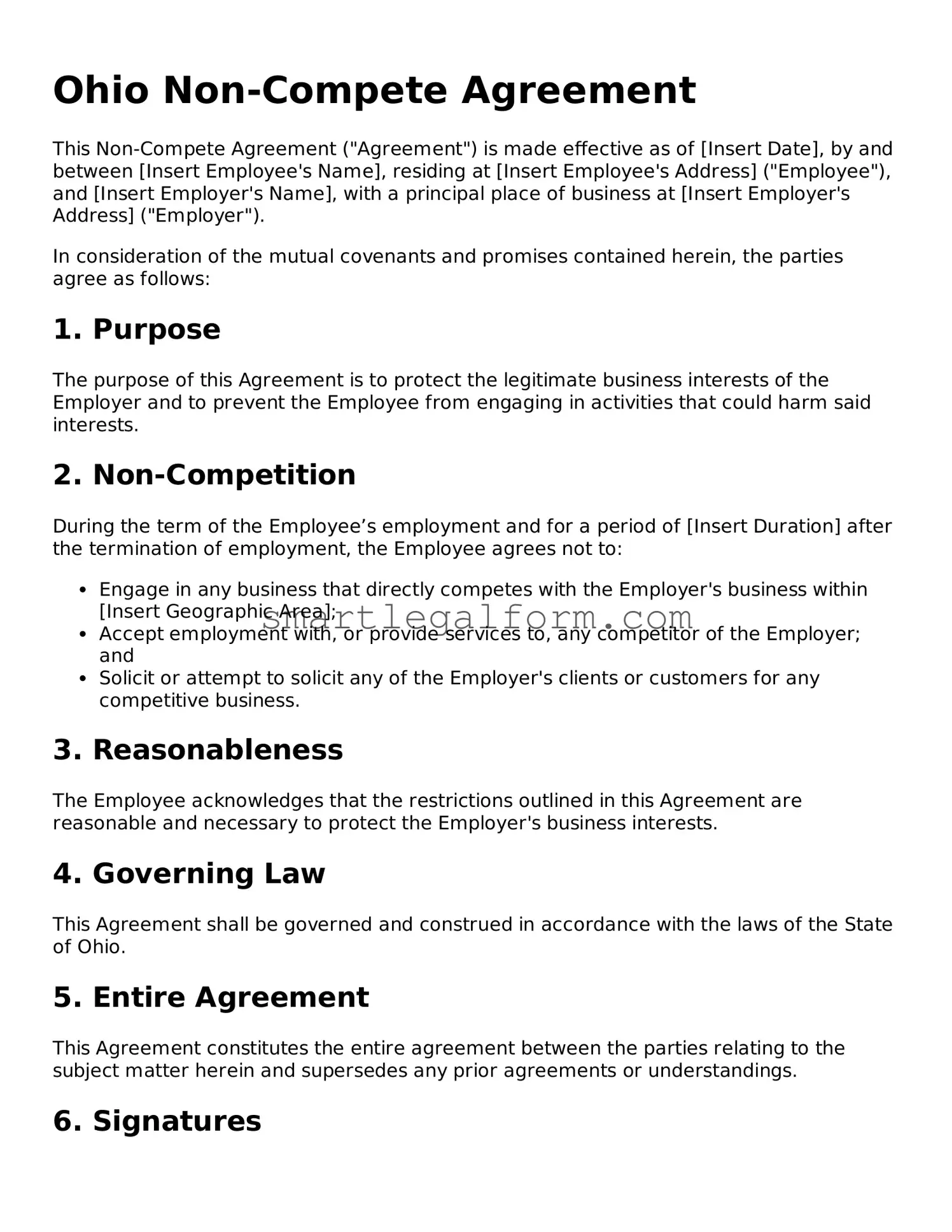Ohio Non-Compete Agreement
This Non-Compete Agreement ("Agreement") is made effective as of [Insert Date], by and between [Insert Employee's Name], residing at [Insert Employee's Address] ("Employee"), and [Insert Employer's Name], with a principal place of business at [Insert Employer's Address] ("Employer").
In consideration of the mutual covenants and promises contained herein, the parties agree as follows:
1. Purpose
The purpose of this Agreement is to protect the legitimate business interests of the Employer and to prevent the Employee from engaging in activities that could harm said interests.
2. Non-Competition
During the term of the Employee’s employment and for a period of [Insert Duration] after the termination of employment, the Employee agrees not to:
- Engage in any business that directly competes with the Employer's business within [Insert Geographic Area];
- Accept employment with, or provide services to, any competitor of the Employer; and
- Solicit or attempt to solicit any of the Employer's clients or customers for any competitive business.
3. Reasonableness
The Employee acknowledges that the restrictions outlined in this Agreement are reasonable and necessary to protect the Employer's business interests.
4. Governing Law
This Agreement shall be governed and construed in accordance with the laws of the State of Ohio.
5. Entire Agreement
This Agreement constitutes the entire agreement between the parties relating to the subject matter herein and supersedes any prior agreements or understandings.
6. Signatures
This Agreement may be executed in counterparts and may be delivered electronically. By signing below, both parties agree to the terms of this Non-Compete Agreement.
_________________________
[Insert Employee's Name], Employee
Date: ________________
_________________________
[Insert Employer's Name], Employer
Date: ________________
